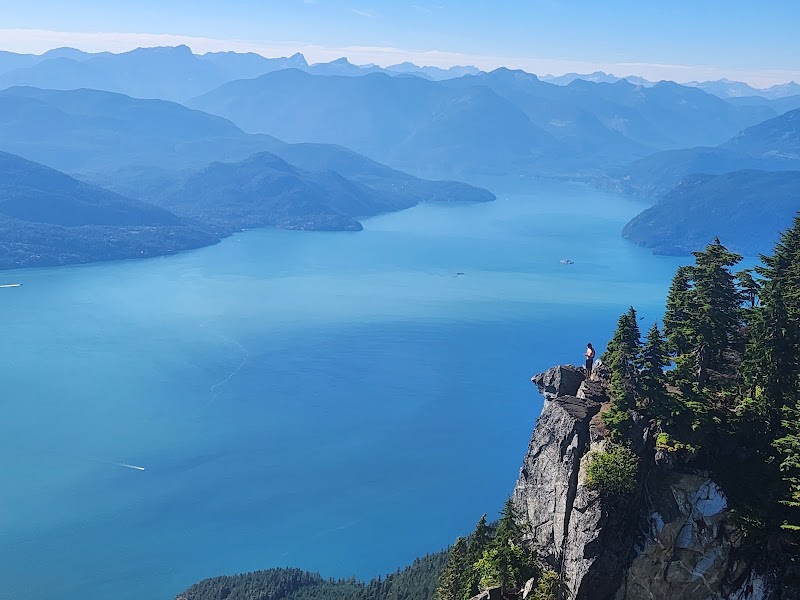
Chasing the Pulse of the City: Running the BMO Vancouver Marathon
The BMO Vancouver Marathon transforms the city into a living course that blends urban streets with sweeping coastal views. This event challenges runners of all levels with a dynamic 42.2 km route offering moderate elevation and steady support, delivering a uniquely vibrant race experience.
Hydrate Early and Often
Take advantage of the well-placed water and electrolyte stations every 2-3 km. Begin hydration before the race to maintain consistent energy levels and avoid dehydration.
Choose Versatile Running Shoes
Opt for shoes with good cushioning and support tailored for pavement running; the course is primarily concrete and asphalt, demanding durable, comfortable footwear.
Plan for Changing Weather
Vancouver’s coastal climate can shift quickly. Dress in moisture-wicking layers and be prepared for cool breezes along the seawall and possible sunshine inland.
Pace Yourself on Hills
The course includes rolling hills with a total elevation gain of around 120 meters. Use these sections to adjust your effort, conserving energy for flatter stretches and the finish.
Chasing the Pulse of the City: Running the BMO Vancouver Marathon
When the city of Vancouver throws open its streets for the BMO Vancouver Marathon, it becomes more than just a race—it transforms into an urban adventure that connects runners with the energy and diversity of British Columbia’s vibrant west coast. Covering 42.2 kilometers (26.2 miles) of road and waterfront paths, this course travels through a mix of city streets and natural scenery, challenging both casual runners and seasoned athletes alike.
The marathon sketches a route that tests endurance without sidelining the experience. Elevation gain is moderate, hovering around 120 meters total, which means the hills push you but never overwhelm. You’ll weave past soaring glass skyscrapers, past historic neighborhoods like Kitsilano and Granville Island’s bustling market, then pulse alongside the imposing Stanley Park seawall where the ocean dares you to keep pace with its endless tides.
Cool Pacific breezes accompany most of the run, making hydration critical — the marathon's organizers thoughtfully station water and electrolyte points every 2 to 3 kilometers. Footwear should balance cushioning with durability, as the course runs primarily on paved city streets, with sections on the seawall offering firm concrete and occasional asphalt patches. Planning your race time is essential to avoid the afternoon sun, especially in late spring and summer months when temperatures can climb into the 20s °C (70s °F).
The BMO Vancouver Marathon offers more than just a physical challenge; it invites you to tap into the city’s fierce character. The crowds, cheering in multiple languages and waving signs, push you forward. The Vancouver skyline watches silently, while the pacers—steady and unwavering—anchor your rhythm. This race respects the runner’s journey, inviting persistence and celebration in equal measure.
Training suggests tackling hills and incorporating tempo runs to mimic the course’s rolling terrain. Nutritional strategy on race day demands steady fueling, with carbohydrate intake starting before the run and managed in small portions during.
Whether you’re chasing a personal best or soaking in your first marathon atmosphere, the BMO Vancouver Marathon fuses urban adventure with the practical demands of endurance running, offering a vibrant, alive experience paced by the city’s pulse and endless waterfront views.
Nearby Trips
All Adventures
Boat Charters
Water Activities
Adventures near Vancouver, British Columbia
Discover the unique and memorable adventures that make Vancouver, British Columbia special.
Frequently Asked Questions
What is the typical weather during the BMO Vancouver Marathon?
Race day usually falls in May, with temperatures averaging 12-18°C (54-64°F). Expect cool mornings with potential for light rain, becoming mild by afternoon. Preparing for both sun and drizzle is wise.
Are there cut-off times for completing the marathon?
Yes, the official cut-off time is typically 6 hours, requiring a steady pace of about 14 minutes per mile. This ensures the course closes on schedule and all runners finish safely.
Is the marathon suitable for first-time runners?
Absolutely. While the distance demands training, the moderately rolling terrain and wide course support runners of varying experience. Many first-timers find the urban setting energizing and manageable.
Are there any notable spots for spectators?
Yes, popular spots include the Stanley Park seawall, Granville Island, and English Bay, where spectators can enjoy close views of runners with vibrant city and water backdrops.
What local wildlife might runners encounter?
Along the seawall and Stanley Park sections, it’s not uncommon to spot harbor seals bobbing in the water or bald eagles circling high above, silently observing the race’s rhythm.
How can I best prepare for the elevation changes on the course?
Incorporate hill repeats into training routines, focusing on controlled pacing and maintaining form uphill and downhill. This prepares muscles and joints for the course’s gentle climbs.
Recommended Gear
Cushioned Running Shoes
Provide shock absorption and support necessary for the hard pavement surfaces on the course.
Moisture-Wicking Clothing
Keep sweat away from the skin during variable, often damp spring weather.
Lightweight Windbreaker
Protects from coastal breezes and sudden autumn chills without overheating.
Hydration Pack or Belt
Allows runners to carry additional fluids and electrolyte supplements on warmer race days.
Local Insights
Hidden Gems
- "Stanley Park’s Beaver Lake lookout offers a quieter, less crowded vantage point near the race route."
- "The historic Granville Island Public Market is a perfect post-race destination for local food and culture."
Wildlife
- "The region hosts raccoons and river otters near waterway sections, requiring runners to stay aware during early morning warm-ups."
- "Local birdlife includes great blue herons frequenting waterfront areas along the course."
History
"The marathon route passes through Vancouver’s original neighborhoods, including Gastown, where cobblestone streets whisper tales of the city’s founding and the spirit of early settlers."
